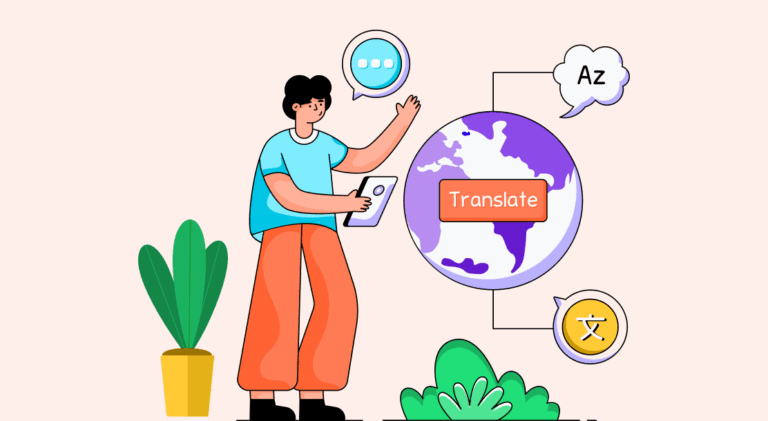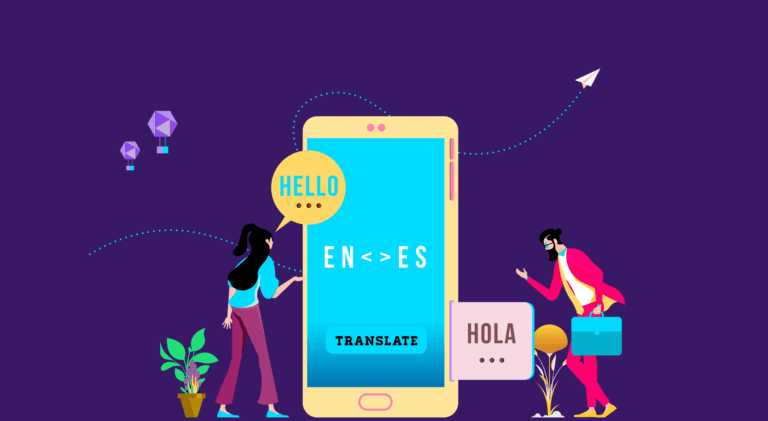
With the rise of globalization, the demand for translation services has increased significantly. Translation services help to bridge the communication gap by providing a way to communicate between people who speak different languages.
Many businesses are expanding into new markets and need to know the latest trends in translation to remain up-to-date and better communicate with their target audience.
In addition, many people travel or move to different countries and need translation services to help them communicate effectively with locals.
With so many new trends in translation to keep track of, it can take time to know where the industry is headed. But let’s break down some of the most exciting translation trends in this article and get ahead of the competition.
Top Four Translation Trends
The translation industry has been growing rapidly over the past few years. One of the biggest translation industry trends in 2023 is creating more personalized content, as consumers expect brands to provide products and services tailored to their needs.
Some other new trends in translation include the use of machine learning and artificial intelligence, media localization, the rise of marketing translation, and increased demand for medical translations.
In the past few decades, we have moved towards a more localized and context-specific approach to trends in translation. This is because language and culture are inextricably linked. Thus, a translation that is not sensitive to these elements will likely fail to capture the meaning and nuances of the original text.
1. Machine Translations via AI
Machine learning and artificial intelligence are being used to automate many of the processes involved in translation, allowing for more efficient and accurate translations. Nowadays, software used to facilitate translation is focused on AI technologies and neural network techniques. It allows for fast, accurate translations over vast amounts of data and offers limitless room for growth.

2. Media and video translation
People are no longer consuming content only in their native languages. The emergence of numerous OTT platforms and the abundance of programs have increased the demand for reliable translations of these materials into other dialects.
The need for translation will, thus, continue to grow because of its widespread demand for multimedia. Additionally, it is ascertained that businesses that extend beyond basic localization or language translations will grow in popularity.
Digital marketing is becoming more and more fascinating with the influx of video material on social networks. Global companies that engage in digital marketing want their target audiences to understand the videos they create easily. Therefore, multilingual dubbing and subtitle services will be in high demand and are thus one of the rising translation industry trends of 2023.
3. Translations of marketing content
The main goal of knowing all the prominent trends in translation services is to assist businesses in attracting non-English speaking clients. Customers use the internet for just about every operation since it gives access to a lot of material. When making a purchase, customers research many factors on the internet. Because of this, company owners have been considering hiring marketing translation services to increase their clientele and boost revenue.
4. Medical translation
The pandemic has somehow managed to bring the world onto the platform. One research in one part of the world can help the sick in another part, thus, giving rise to the importance of medical translation.
Medical translation has become a crucial trend in translation. Also, healthcare translation helps analyze medical data in a fast and reliable manner.
What is Machine Translation Post-Editing (MTPE)?
Trends in the translation industry are gradually evolving due to post-editing. Post-editing is the procedure through which a linguist or translator evaluates a translation produced by AI and then makes necessary corrections to make it suitable for publication.
Minimal post-editing can be an option for works that aren’t meant for publication or even when there’s insufficient time and simply the overall idea matters. Only significant errors (mistranslations, exclusions, amendments) that influence the reader’s ability to grasp the content are fixed in minimal post-editing.
The finished text must sound as if it were authored by a professional translator to be considered publishable. It entails using the client’s language, adjusting to the tone and structure of the source, maintaining consistency, and fixing every single error that is found.
What is Transcreation in Translation?

Do you wish to make content for a larger target audience globally and reach customers in different languages? Do you want to increase customer involvement and purchases? Are you considering exporting or going global with your company at some stage? If any of these ring a bell, you must create translated web material that is understandable, pertinent, efficient, and culturally suitable for your international target market. This is called ‘transcreation’.
‘Translation’ plus ‘creation’ are combined to form the term ‘transcreation’, which refers to translating marketing copies and other things that must be rendered comprehensible, pertinent, etc., in foreign languages.
Transcreation is often called ‘creative translation’, where the text is not specifically translated verbatim. It does, however, adhere to the fundamental ideas of originality. This implies that it is frequently essential to alter vocabulary, add metaphors, and change speech patterns during transcreation.
Since transcreation takes into account all facets of the significance of the two languages, it can be more difficult than a straightforward translation. Marketing translation services employ not just linguists but also professionals who are experts at process writing and creative copywriting skills.
The content above indicates that businesses must recognize localization trends and develop strategies to deal with them. The localization process will cover both B2B and B2C activities.
Operating in silos does not lead to significant global expansion for businesses. Instead, they create networks and alliances to expand into other areas by utilizing local knowledge. For businesses to represent themselves in a favorable light and efficiencies while expanding, B2B localization becomes crucial.
The world of commerce is a complicated one. Global businesses have much to keep them busy between language difficulties, different legal systems, and the complexities of transporting components and finished products between nations. The growth of localization divisions in major international corporations will be a major translation industry trend in 2023.

Key Takeaways
- The demand for quality marketing translation services has grown exponentially, leading to new trends in translation.
- One of the top translation industry trends in 2023 includes machine translations via AI, media translations, marketing content translations, and medical translations.
- MTPE is the post-editing required in any content after it is translated via AI services.
- Transcreation is copywriting material to make it more appealing during the process of translation marketing.
FAQs
The truth is that machine translation capability is not yet sufficiently developed to replace individuals involved in the procedure consistently. Simply said, it most likely will never happen. The possibility of fully automatic translations has already been discussed and wiped out.
The listed below constitute the four commonly typical translation types
1. Translation of literature
2. Professional translation
3. Administrative translation
4. Technical translation
The demand for localization translators is rising as a growing number of companies focus on consumers worldwide. Salaries for such professional translators are expected to rise even higher as the requirement for localization solutions soars in the aftermath of the international pandemic.
Latest Blogs
Explore how Google’s 2025 AI search updates triggered ranking chaos. Learn actionable strategies to adapt your SEO for AI Overviews, zero-click searches, and SERP volatility. Stay ahead now.
Learn how to rank on AI search engines like ChatGPT, Perplexity, and Gemini by optimizing your content for authority, structure, and relevance. Stay ahead in AI-driven search with this strategic guide.
Explore the best healthcare SEO services for your medical practice. Improve online visibility and effectively reach more patients in need of your services.
Get your hands on the latest news!
Similar Posts

Translation
5 mins read
All You Need to Know About Language Translation and Terminology Management

Translation
5 mins read
6 Reasons to Translate Content into German

Translation
5 mins read